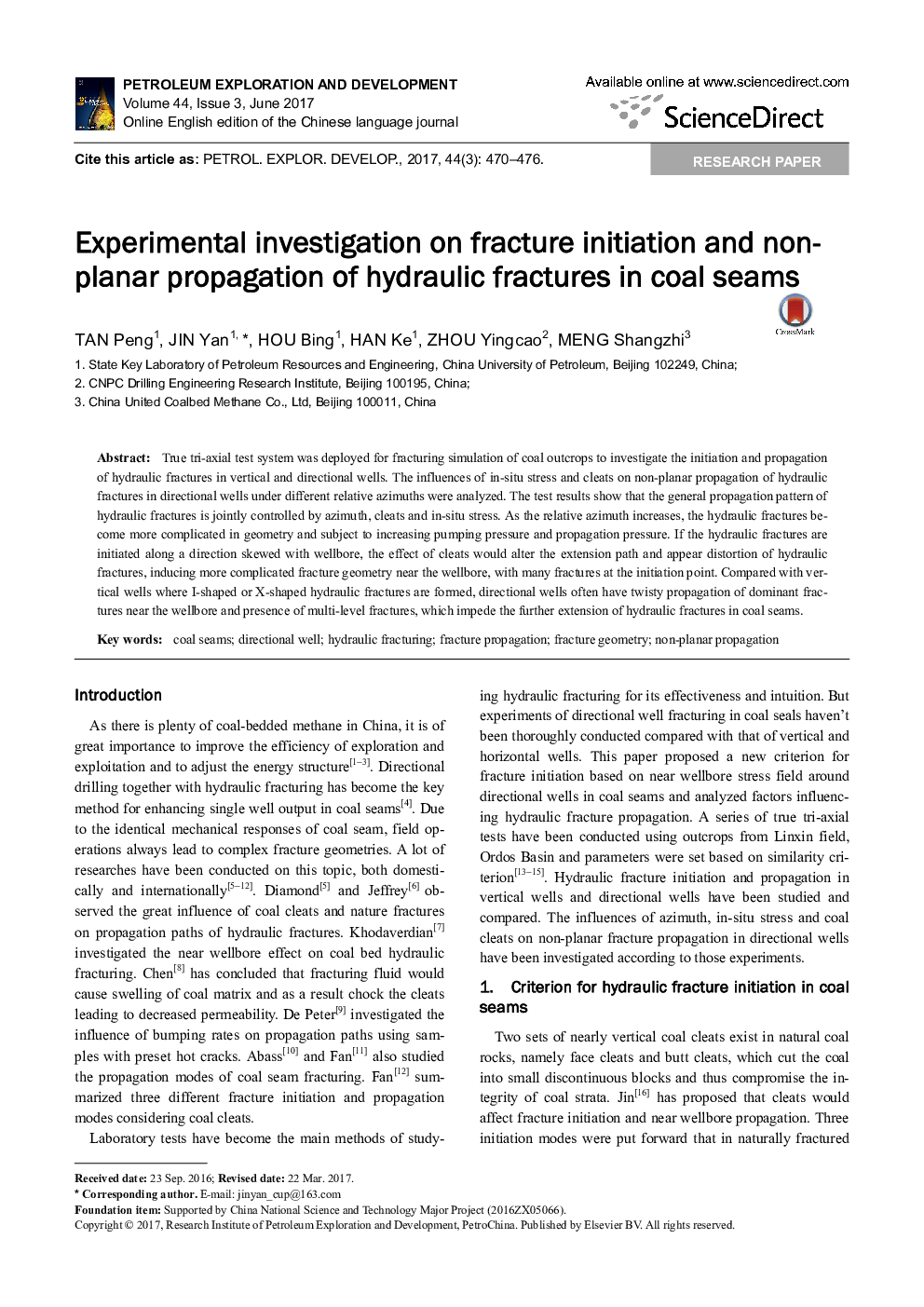| Article ID | Journal | Published Year | Pages | File Type |
|---|---|---|---|---|
| 8912263 | Petroleum Exploration and Development | 2017 | 7 Pages |
Abstract
True tri-axial test system was deployed for fracturing simulation of coal outcrops to investigate the initiation and propagation of hydraulic fractures in vertical and directional wells. The influences of in-situ stress and cleats on non-planar propagation of hydraulic fractures in directional wells under different relative azimuths were analyzed. The test results show that the general propagation pattern of hydraulic fractures is jointly controlled by azimuth, cleats and in-situ stress. As the relative azimuth increases, the hydraulic fractures become more complicated in geometry and subject to increasing pumping pressure and propagation pressure. If the hydraulic fractures are initiated along a direction skewed with wellbore, the effect of cleats would alter the extension path and appear distortion of hydraulic fractures, inducing more complicated fracture geometry near the wellbore, with many fractures at the initiation point. Compared with vertical wells where I-shaped or X-shaped hydraulic fractures are formed, directional wells often have twisty propagation of dominant fractures near the wellbore and presence of multi-level fractures, which impede the further extension of hydraulic fractures in coal seams.
Related Topics
Physical Sciences and Engineering
Earth and Planetary Sciences
Geochemistry and Petrology
Authors
Peng TAN, Yan JIN, Bing HOU, Ke HAN, Yingcao ZHOU, Shangzhi MENG,
